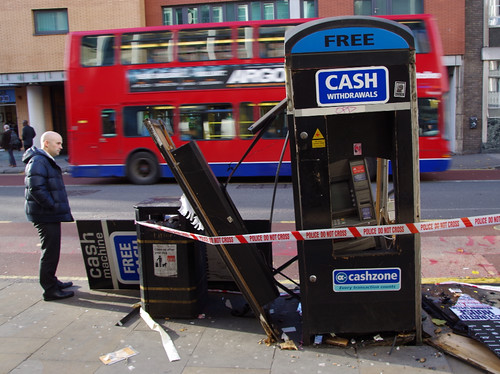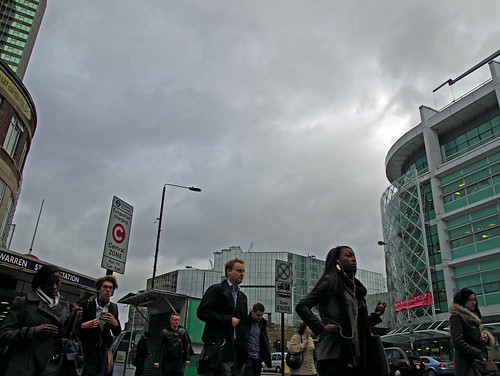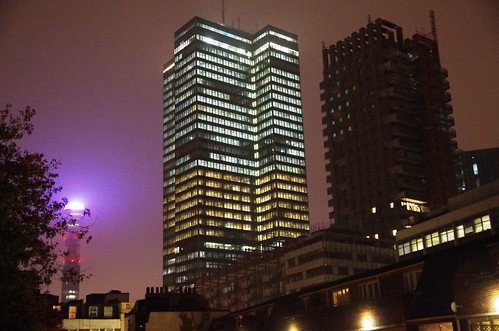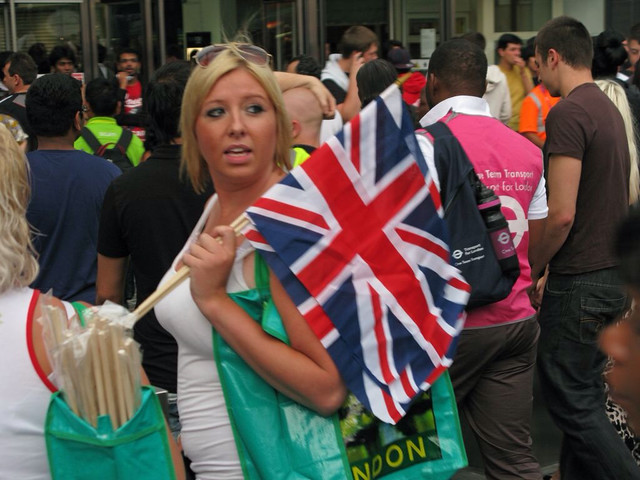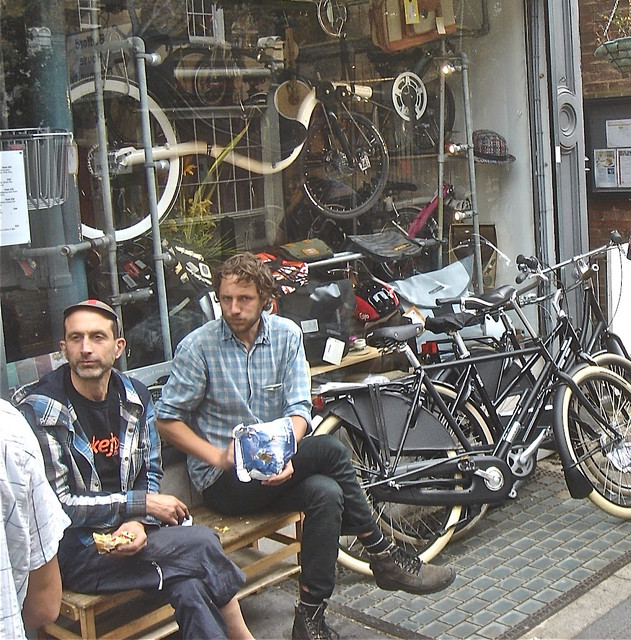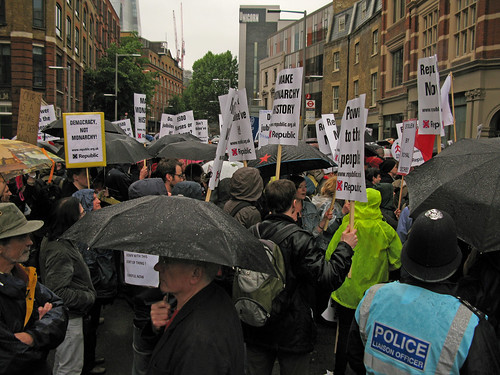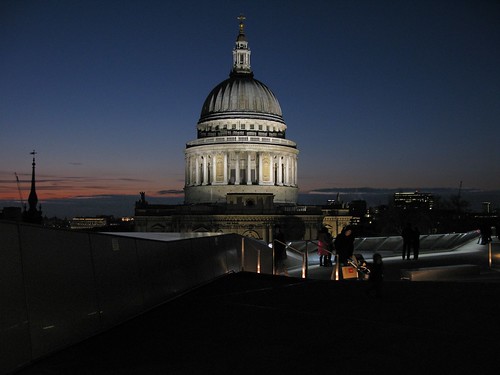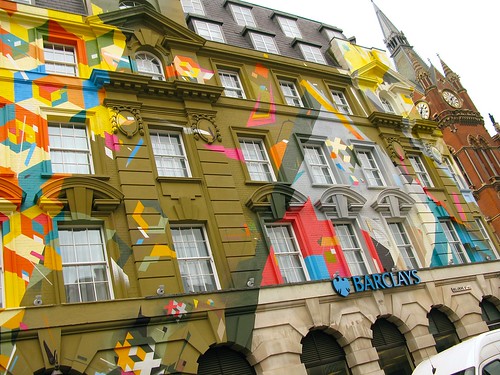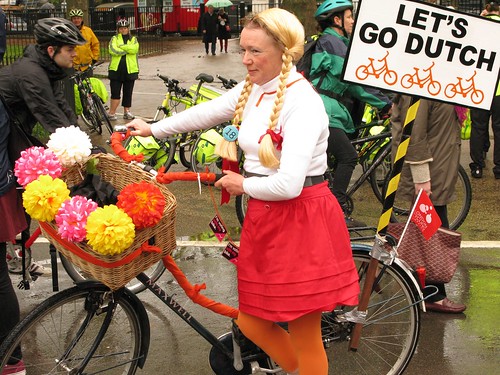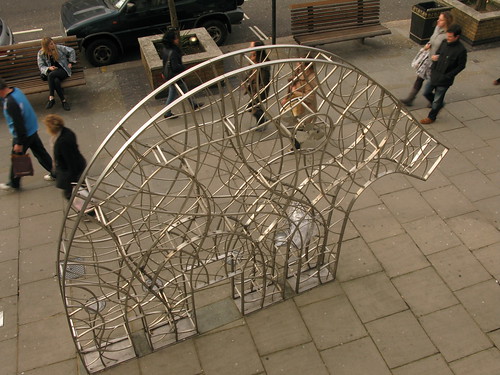Friday, 7 December 2012
Free cash
So what's gong on here? A smashed kiosk is roped off with police tape, sides leaning drunkenly, wires trailing loose and debris scattered around. People stop and take pictures on their iPhones, speculate about what might have happened and move on. The kiosk has signs proclaiming 'Free' and 'Cash Withdrawals' and the company name, 'Cashzone (Every transaction counts)'. A smaller sticker reads 'Ink Stain System Fitted' and, confusingly, 'No Smoking'. The kiosk itself seems to be a converted telephone booth, perhaps not the most suitable use for such a flimsy structure, but the cash machine is still in there, not working, but not noticeably damaged and presumably still full of ten and twenty pound notes. The machine nestles at a angle among the smashed sides, along with an impressively large electric siren and oddly, a bundle of brightly coloured nylon fabric that might be a tent or some kind of safety wear.
Lying behind the rubbish bin, a completely detached sign misleadingly tells you 'Free Cash'. Maybe free cash was the idea behind this, a ram-raid attempt that failed. Cashzone's website reports a recent ram-raid on a convenience store in Warwickshire but doesn't mention this, so maybe it's just the result of bad driving, a lorry reversing inaccurately or a drunken driver losing control. Either way, a graphic reminder that we're not entirely insulated from the possibility of violence.
Monday, 3 December 2012
Warren Street Blues
Friday, 23 November 2012
Wall to wall iTech
The ghost of Euston Tower
Sunday, 21 October 2012
Cycle chic and bicycle culture
Tuesday, 2 October 2012
The path less travelled
Friday, 7 September 2012
The art of street photography
Sunday was a bit quieter and I did visit the rather baffling conceptual art at the Quaker meeting rooms. Close by is the Rose and Crown pub, where I wanted to see Matt Russell's Motion Blur, simple but effective mobile phone photos of people captured from the top deck of a bus - he calls this 'something of an obsession'. Then at La Delice cafe, a show by Esther Simpson titled People I don't know which delivers as promised, fascinating glimpses of other people's lives. Quite eccentric lives, some of them.
It would be interesting to know if the subjects of Esther's photographs were unaware of being photographed, as it appears, or if she just asked them not to look at the camera. Maybe a combination of both, since people react in different ways to a camera: some will want to pose, others hate being photographed or want to make themselves presentable first. A few might be doing something dodgy and definitely don't want anyone taking photographs. As I found out when I tried to photograph a car wash in Tottenham - the camera sometimes just arouses suspicion. Outside the Olympics on opening ceremony day, a girl passing by actually hit my camera because she had to walk in front of it. Capturing strangers on film is of course the absolute basis of street photography and while you could well argue that there's far too much of that sort of thing, if you are out taking photographs you'd hope not to annoy too many people in the process.
The photo above is from Walthamstow in perspective, number 11 on the Art Trail, opening on Saturday.
Monday, 3 September 2012
E17 in the news
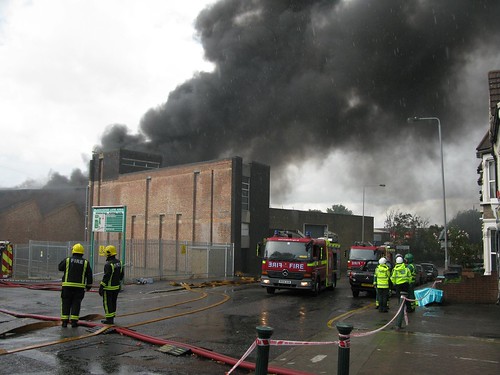 |
| Warehouse fire 25 August |
Thursday, 23 August 2012
Headcam crazy
Filming yourself riding a bike might once have seemed absurdly pretentious, something only an avant garde artist would do, but nowadays the cycle magazines advertise helmet mounted cameras and it's no surprise to discover that people buy them. They even wear them in the street: this guy is at the London Cycling Campaign's Big Ride earlier this year. But while riding a bike is invigorating, frees your thoughts from everyday worries and only gets slightly boring if you do the same route every day, watching a video of someone's bicycle commuting route is of course like watching paint dry. Not exactly riveting.
The original purpose of the headcam was to capture exciting off road action on mountain bikes, so you could re-live the moment and perhaps work out why you crashed. There's a definite trend though, for urban cyclists to wear one on the way to work as a matter of course. I even know someone who does just that.
I suppose there can be exciting moments. Once I cycled the length of Tottenham Court Road holding a digital camera in one hand and steering with the other hand. 'Where's the drama?' my other half sneered, until it came to squeezing through the narrow gap between a bus and a lorry*, dodging pedestrians at the red lights and all that - it looks a lot more dangerous on camera than it really is. Not worth uploading to YouTube though, and soon deleted to free up hard disc space. Back in 2004 someone made a six-minute video of a messenger bike race in New York city that actually did bear watching, but only because it featured a group of riders being outrageously illegal, stopping cars and pedestrians in their tracks.
So do the modern headcammers want to capture bits of everyday excitement? No, apparently it's a form of insurance, a way to record bad driving and aggressive drivers, just in case. There are endless clips posted online featuring petty disagreements between cyclists and drivers. Some not so petty you might think, since they involve death threats, but of course that's all talk except in very rare cases. The trouble with this approach is that it encourages a combative attitude, which weight for weight doesn't look like such a good idea - an average bike weighs around 15kg, maybe 10kg if it's an expensive racing bike, while a typical car weighs 1200kg. It might be a good idea to think twice before you go banging on car windows, shouting at drivers at the next lights - and then threatening them that it's all on video. Getting people angry is not going to make the roads any safer.
*Note: that was a stationary bus and a stationary lorry. You should never ever do that if the vehicles are moving or even have time to move before you get to the next traffic lights.
Wednesday, 8 August 2012
Olympic madness: Dutch bikes take over East London
Why? The Olympic campground is a bit more than a mile down the road, occupying playing fields on Walthamstow Marshes for the duration. Seen from the air, a high proportion of the tents are orange, which can mean only one thing: the Dutch contingent is camping there en masse. The bikes belong to OV-fiets, the rental company who have bases at most railway stations in the Netherlands. Unlike our own Boris bikes, you need membership to rent these, so they are only really available to nationals. Most of the bikes are identical but I saw a few decorated with flowers. Marigolds, naturally. You can even see passengers riding sidesaddle on the luggage rack - common in Amsterdam, but perhaps not so sensible in London.
The Borough of Waltham Forest has risen admirably to the occasion by posting signs all round the junction, introducing a new rule for the occasion: DO NOT CHAIN BICYCLES TO THE RAILINGS.
Wednesday, 1 August 2012
Flying the flag
Thursday, 19 July 2012
Get your bike fixed?
So why the comments? The issue here seems to be a huge comprehension gap. It's a bit like when I try to explain to my wife what's going wrong with our loft conversion: I'm an architect but she knows absolutely nothing about the practicalities of building, so I end up sounding like a condescending arsehole (so I'm told). We just don't speak the same language, although being an architect I can at least draw pictures to make things clearer, but it's also a matter of different priorities, different values. Bike shops are like that. You come in with your typical ordinary bike and you know there is something wrong with it. Maybe the chain keeps coming off, or it won't change gears any more. Probably you've already decided how much it's worth to get it fixed and you hope to get it back in time to ride home that evening, if not within the next fifteen minutes. Now, the staff at Bikefix are without exception bike nuts, like most proper bike shop staff. They know about every kind of bike there is and probably have some heavily customised machine of their own that they change around every week to make it cooler, or faster, or just plain different. What are they going to think of your ordinary bike? Well, to keep it short, they are going to see more wrong with it than you do. They know what they would do if it was their bike (strip it right down and replace most of the parts, throw out those luggage racks and all those unnecessary bolted-on bits, maybe even a quick spraycan job to brighten up that dismal dull silver-grey finish). What can they do about your problem? They know exactly what will happen if they just replace the bit you think needs replacing: the chain will still come off, or the gears will be ok for a week and then start to seize up again. So they explain what they see as the way to sort it out permanently, and of course it's five times the figure you had in mind, maybe more than you paid for the bike in the first place. And it will be ready on Thursday, not today. After all, it takes time as well as parts, and shops only exist to make a living wage. Of course that's not what inevitably happens - most repair jobs are actually quite straightforward - but you can see the scope for frustration. That's one route to disillusionment, but maybe also inspiration to put your money in the right place and invest in a decent bike, whether by ditching your old piece of crap or by getting it to work nicely.
At the other end of the scale, some of the gadget freaks who like expensive bikes are among the most persnickety people in the world. Is that a proper English word? It certainly feels like the right word to describe that particular combination of uncertainty and obsessive attention to detail. Take a look at a specialised bicycle forum if you don't believe me, or have a laugh at the one review of Bikefix on Time Out. These people know enough to know what they don't like but not enough to know how to achieve what they do want. A no-win situation for everyone involved, potentially.
Do satisfied customers wrote reviews? I once bought a lemon-yellow Brompton there. They have an excellent online system for choosing all the different options for colours, gears, type of handlebar etc. but after I did that I went in to finalise the order. They didn't like the colour but they didn't try to change my mind, and warned me accurately about what was then a long order time. It certainly didn't occur to me to find an online review site and say how the yellow was exactly as lemony as I hoped and the bike had absolutely nothing wrong with it. Between the two extremes, Bikefix is a pleasure to visit and they can usually do or get whatever it is that you want. Within reason.
Monday, 2 July 2012
Post industrial landscape in East London 3/3
We stop to admire the ornate Victorian buildings at Abbey Mills pumping station. After that the improvements fizzle out and the route is somewhat older, cracked tarmac and concrete, endless terraced houses both sides, and little roads that cross over the Greenway at intervals. These junctions all have metal gates, randomly wide open or locked shut, and those annoying bicycle barriers where you have to get off and push your bike underneath the bar. You can just about straddle the crossbar to squeeze under without dismounting. Seeing my strained expression a passer-by advises me to "watch yer head". It's not my head I'm worried about though. "Oh yeah, see where you're coming from there mate" he sniggers. Time to move on.
We ride the remaining four miles to Beckton uneventfully. Completely losing the route at the A13, we climb the giant spoil heap known as Beckton Alps to see where we are. The bottom of the 'Alps' is a nice winding path through the trees, but higher up, inexplicably, we find the top, the open bit with the view, is completely surrounded by a high metal security fence. Fortunately some public-spirited person has removed a few railings so we can squeeze through, minus bikes, and climb to the top. What a view! This must be the only place where you can see the whole of the city spread out before you: Greenwich, Canary Wharf, the Gherkin and the Shard, Stratford and the Orbit tower at the Olympic site, all spread out in one amazing vista. It's the one photograph I take all day, knowing a photo can't hope to convey the scale of all this.
Thursday, 28 June 2012
Post-industrial landscape in East London 2/3
That was the LVA's worst excess, putting into perspective minor annoyances like unnecessary gates and barriers (supposedly only temporary), and their failure to get rid of the rubbish or to make decent paths. The chain of reservoirs nearby looks like going the same way. Currently they are operated by Thames Water, who maintain the place efficiently but leave the margins entirely wild, a true nature reserve in the sense that wildlife coexists naturally with the function of the place. Only fishermen go there, putting a pound in an envelope and dropping it into the honesty box. Now Waltham Forest have won lottery money to turn the place into another nature park. Catch it while you still can and see the difference for yourself.
Across Hackney Marsh football fields, a vast expanse of grass that's escaped the grasp of the Olympics, we get on to the canal towpath. The towpath recently got the Olympic upgrade treatment, properly laid paths that are maybe less fun than awful muddy ruts but actually quite nice for cycling, now the loose gravel is starting to bed down to a less slippery surface. Alongside the Olympic site the graffiti-covered warehouses and artists studios are still there, surprisingly not wiped out by new developments, although you can see the signs of change everywhere. One old warehouse has huge new windows cut through the graffiti-covered brickwork, and a concrete-framed building next to the lock suddenly has new glass walls, with the steel skeleton of the old loading bay still suspended over the canal.
Tuesday, 26 June 2012
Post-industrial landscape in East London 1/3
Things get off to a bad start with a flat tyre on one of the bikes, but that is soon mended and we start out on the familiar route down to the canal. Just ten minutes on the roads before we get down to the fortress-like waterworks on Coppermill Lane. Half a mile of un-climbable wire fence with a vehicle crash barrier behind it: with a couple of watchtowers and armed guards patrolling the perimeter it could easily pass for a Cold War concentration camp. Who knows what paranoic scenario prompted those defensive measures.
Across Leyton Marshes, a wide path lets you cycle side by side, although we're not very good at keeping pace. I keep getting ahead and stopping to wait for my companion to catch up, except for the times when I stop to take photographs while she disappears into the distance, unaware that I've stopped. The path takes you along a high embankment, with the horse riding school on one side and the marshes on the other, then twin tunnels under Lea Bridge Road. The tunnels flood sometimes, usually just a few inches of water, but occasionally a proper flood two metres deep. You can cycle through the smaller floods but it's easy to misjudge the depth, inevitably soaking one or both feet because you can't stop pedalling.
A twisting path from there leads to the bridge over the River Lea, once bright red but now faded to dusty pink. Giant hogweed grows on the river banks, maybe three metres tall and highly poisonous. You can get a nasty rash just by touching it, and no doubt one day it will be exterminated by the Lea Valley Regional Park Authority, but while it lasts it's rather spectacular, perhaps the biggest plant that grows wild in this country.
Part 2 tomorrow
Thursday, 21 June 2012
London Festival of Photography, a critical tour
There are 24-hour displays at both Kings Cross and St Pancras, Contemporary Street Photography at Kings Cross and The Great British Public, from the book of the same name, at St Pancras. Half the fascination, though, is not so much the actual photographs, as getting carte blanche to walk through normally closed doors. In a borrowed or temporary gallery on the top floor of a seedy Oxford Street building is the International Street Photography awards show, where windows uncleared for decades look out over the taxis and buses. The photos are original and striking, although I was sorry to see the winning view of Mexican workers sleeping in the back of a moving pickup truck, had been repeated with endless variants.
Repetition is all too common in photography - making series of images instead of thinking up new approaches - but unique images are much more interesting. One of the shows at the Fitzrovia Community Centre, Behind Closed Doors, is another case in point. The stories of abuse suffered by female domestic staff in France are well worth reading, but all those images of anonymous apartment buildings, the scenes of those crimes, really add very little to the project. So much easier than photographing the abused women, or stalking the perpetrators to publicly shame them, but the buildings tell you nothing except that there must be thousands more cases of exactly the same kind of bad treatment. The Single Saudi Women show by Wasma Mansour similarly disappoints: the women barely appear and their surroundings are merely ordinary.
The Horse Hospital, normally un-noticeable around the back of Russell Square tube station, is suitably weird, a ramp instead of stairs and a miniature stage draped in red velvet. The family history recorded there by Kurt Tong is reasonably engaging, but only if you can be bothered to read all the background information.
Two shows near Euston are much better versions of the personal narrative. At the William Road Gallery, which is actually the reception area for architects John McAslan and Partners, are several intense and fascinating collections, especially Celine Marchbank's record of her mother's terminal illness, put together with considerable wit and barely a hint of pathos. Also striking are Evgenia Arbugaeva's images from Siberia, showing at Calumet: revisiting the small and desolate town in Siberia where she grew up, she finds a young girl to pose, in a sense, as her younger self. The poverty of the post-USSR town is striking, bleak concrete apartment buildings and battered interiors, contrasting against the moonscape beauty of the landscape. The girl poses in her bedroom, on the prow of an icebound ship and balancing on rusty machinery, throws her shadow against an abandoned building, runs with a meteorological balloon nearly as big as she is, stands balanced on a tiny raft on the icy waters of a lake. Again, imaginative and unsentimental. I've taken the liberty of copying one of her images above. There is more to enjoy on her website http://www.evgeniaarbugaeva.com/, or get down to Calumet while it's still on.
Tuesday, 5 June 2012
Making Monarchy History
The annoying thing about this is not that there wasn't room for everyone who turned up to get close to the river, but that access was so tightly controlled that the riverside spaces were in fact half empty. Near the London Assembly you could get up to the barriers easily enough, close enough to see spectators a few deep along the riverside railings, and acres of empty wet concrete behind them, but the security staff were not letting anyone through unless they had a ticket (apparently available in advance). This new craze for security may be getting just a little out of hand. Aircraft carriers on the Thames and police with machine guns (no kidding) at London railway stations are just the tip of the iceberg. On this occasion, all the bridges were closed except to invited and security-cleared participants, and there was a control barrier at every single point that gave access to the Thames.
So we had crowds and a cheerful holiday atmosphere, but really nothing happening - except for this small but quite noisy demonstration waving their placards and adding to the congestion on Tooley Street. Better than nothing, and where but an anti-monarchy demonstration would you see the message, 'Down with this sort of thing - careful now'?
Apart from that little gem, we were not amused.
Friday, 25 May 2012
A view from above: 1 New Change
What developers love to do, is to take a whole city block if possible, where there might have been twenty or thirty buildings all constructed individually, each with its own character and not quite the same as its neighbours, sometimes not even similar in height and style - and fill the whole block with a single building, usually much higher than what was there before. The developers will talk about financial reality, about ensuring they get enough sellable units or enough square feet of retail space to make the project financially viable. In fact, London woud be a bit of a grim place if we had nothing but street after street of unchanged Victorian buildings. The big set pieces do contribute something, opening up the street pattern and making London a contemporary city, not a historical set-piece. Even so, the pressure for large projects is insidious.
Construction projects are a huge part of the country's economy, so that lends pressure to the introverted logic of those profitability arguments, which seem to be taken at face value by everyone concerned whatever the merits of the project. Step outside of that mindset, though, and you see a process that isn't always creating change for the better. Imagine, as the developers do, that eventually all but the best listed buildings, everything except the heritage centrepieces, will eventually present an opportunity to cash in, and you can see how London might be edging towards a completely different look, a city of giant developments with the odd quaint old building dwarfed between them to amuse the tourists. Does that sound familiar?
1 New Change was designed for Land Securities by French architect Jean Nouvel. The shaded glass idea seems to be borrowed from an even uglier building in Manhattan by Frank Gehry. Nouvel's 23-storey residential tower at 100 11th Avenue is a straightforward vertical block with one curved side and a rather pleasing façade of random square windows. It sits side by side with Gehry's building and completely outshines it, which makes it ironic that St Paul's got a design influenced in that way.
Friday, 11 May 2012
Colour explosion at Kings Cross
The hotel is a typical London block, built in the early twentieth century in red brick with lots of fine carved limestone details, nothing very exciting by London standards, but just try looking for that kind of thing in an American city, for example. That paint is guaranteed for twenty years, apparently, but the novelty is going to wear off much sooner than that. Will it come off? No, most unlikely: even intensive graffiti removal techniques don't entirely remove all the paint, and over an entire building that would be ridiculously expensive. Sandblasting might work but it destroys the surface of bricks. So the original natural materials are likely to be covered up permanently.
One can only hope the owners will keep the facades freshly painted, and maybe next time do something that actually makes use of the architecture instead of camouflaging it.
Sunday, 29 April 2012
Cycling in the rain: the Big Ride
The point of the ride was to support the LCC's campaign to make London's streets more people friendly. There's been a certain amount criticism of Boris Johnson in connection with the issues of cycling safety and giving priority to vehicular transportation, to the point that it almost seemed inappropriate to come to the ride on a Boris bike. It's worth considering his actual achievements though. A cycle hire scheme that seemed to materialise overnight. The cycling superhighways, incomplete and widely criticised but still quite a step forward. Decluttered streets (probably miles of railings removed and a move towards shared space, intended to promote shared responsibility (Exhibition Road, Oxford Circus)rather than enforced separation. Not everything he's done is right or admirable but as Londonist says today, apart from his vanity projects, quite a lot of what he's done is relatively modest, making quiet incremental improvements that spend money where it can really make a difference.
Friday, 27 April 2012
Jean Cocteau in Leicester Square
The mural was painted by Jean Cocteau, French poet, artist, dramatist and film maker. Painted directly onto the plaster with the lines seeming to bleed into the surface, Cocteau had clearly established his regular style by this time. It depicts standard scenes of the Annunciation and Crucifixion, but the interesting thing is the way the figures are portrayed. Look for eyes drawn as fishes, faces gazing upwards with eyeballs protruding, figures joined together, wispy beards, rounded and protruding body parts - lips, nipples, backsides - carefully exaggerated. You only see Christ's feet: the dominant figures in the crucifixion scene are the Roman centurions, nun-like characters, and what might be a self-portrait.
The church was badly damaged by bombing in WWII and rebuilt in a strange blend of neoclassical and Art Deco styles, keeping the original circular shape of the damaged building (once a Georgian panorama). Cocteau, by then an old man, was commissioned to do the mural when the building work was finished. There's an entertaining notice in the church describing how he surprised visitors to the church by talking to his characters as he worked. It took him only a week to finish the painting, in November 1959. He signed it in 1960, the same year his last film was showing in cinemas nearby.
Tuesday, 24 April 2012
Street sculpture in Notting Hill Gate
Star of the show is this quirky stylised elephant, the Carnival Elephant by Lebanese urbanist and sculptor Nadim Karam, made as a sort of trelliswork of delicate stainless steel bars. It's on the pavement outside Waterstones, at the bottom of the steps leading up to a bleak 60's tower block. You might not realise at first what it is, but look closely and there are four legs, eyes and trunk. The eyes are pair of little aluminium propellers, one of which spins but the other one has blades missing, putting it off-balance. The lack of safety measures is refreshing: in 2004 the Group discussed some kind of warning texture in the paving to stop anyone walking into it, but that never got done, so you have to assume people have more sense.
Wednesday, 4 April 2012
London's pigeon menace
Two things particularly stand out.
First of all, there was an article in the Independent extolling the merits of a maze that's temporarily installed in Trafalgar Square. That square is the focus of Ken Livingstone's anti-pigeon campaign: in 2003 he stopped the bird-seed sellers operating in the square, and shortly afterwards banned feeding the birds and introduced fines to back up the ban. Now there are security guards who are quick to move in if they even suspect anyone of breaking the byelaws. The article in the Independent talks glibly about 'flying vermin' and the supposed health hazards, a standard line of anti-pigeon reasoning that is becoming mainstream self-evident wisdom (although the health issue is largely speculation with nothing much in the way of hard evidence to back it up): pigeons are a nuisance on a par with rats and dirty drunks / drug addicts asking for money. A whole industry has grown up to provide pigeon wires, plastic spikes and netting everywhere a pigeon might want to perch, and the language of their advertisements speaks for itself. Pest control. Deterrent. Reducing numbers. Unhygenic. Using hawks to scare off the pigeons is advertised as an environmentally friendly solution.
The second thing that grabbed my attention was an alleged form of malaise that's being called Nature Deficit Disorder. BBC News reported in March that "British children are losing contact with nature at a "dramatic" rate and their health and education are suffering", according to a National Trust report. The NT are latching on to the term Nature Deficit Disorder, which was invented by an American journalist and probably overstates the case for contact with nature at a formative age, but it certainly corresponds to a sense that wholly artificial surroundings can't be entirely healthy at any age.
Pigeons are related to the domestic doves that were widely bred at one time, now reverted to living wild. They look just the same as wild wood-pigeons and make the same rather beautiful cooing call that you hear in the countryside. Most of them look healthy enough - admittedly not all. Watch the way they move as one but compete for the pickings on offer, observe the pecking order in action, and the way they fly off, circle and land again in a loosely coordinated formation. The pigeons were and always had been a popular tourist attraction, as much a feature of central London as the statue of Eros and the flags on the Mall, until Ken decided to get rid of them. Is that really what we want, isn't there another side to the story? Visitors to London used to come to Trafalgar Square specially to feed the pigeons, not to look at half-baked art on the fourth plinth. The problem of course, is that eating outside doesn't mix well with begging vagrants and scavenging birds, so we discourage both as much as possible - but I'd say we lose something in the process, another part of the natural world swept out of reach.
So yes, feed the pigeons next time you see them and have a little food to spare. But don't even think about tempting the security guards at Trafalgar Square.
Saturday, 3 March 2012
Pie and mash in E17
No. 76 L Manze Wholesale and Retail, Live Eel Importer, reads the moderately elaborate shop front, alongside a blue Waltham Forest Heritage plaque. Jellied & Hot Eels. Pie & Mash. I visited in February on impulse, partly because I was cold and hungry but mainly to see what it's like inside. The shop is long and narrow, with dark mahogany bench seats, floor to ceiling tiling and a patterned ceiling. Everything brown, white and sludge green with bold black and white chequer tiles up to waist height. There are mirrors set into the tiles, and big brass and copper pots of aspidistras, those most boring of pot plants. The windows were steamed up and I have to confess to feeling something rather oppressive about the place, a bit claustrophobic even though there were only a few other customers. It's a bit of history all right but I couldn't manage the proper sense of reverence. On the contrary, it made me feel that the old days were when people had modest aspirations and knew their place, before cable TV, four wheel drive cars, holidays abroad and all that supposed social mobility.
The menu is exactly what it's always been. Quite good meat pies with a thin crust and stewed minced beef inside. Mashed potato, which has to be unappetisingly smeared onto the side of your plate with a giant spatula. 'Liquor', which is a sort of bland but bright green gravy, perhaps made from mushy peas. And then there's the eels, which used to be killed to order if you wanted, or you could take them home alive and risk getting bitten. I'm not sure what happens now, but if you eat them in the shop they come cold in briny colourless jelly - disgusting or delicious depending on your preferences - or hot, which is easier to cope with. That's it, the only other food on offer is fruit pie.
It is apparently quite popular, especially in the nostalgia stakes: Brits living in California or former E17 residents who have escaped to Suffolk and Kent keep a rosy image of the place and the food, and they will visit when they have a chance. Even so, it's impossible to imagine anyone opening a new pie and mash shop now. Anyone who remembers Cookes in Dalston will tell you it was the best of the pie and mash shops, spacious with lots of mirrors, mahogany and marble and all that, but now it's a Chinese restaurant, so you can still appreciate the decor minus the cockney nosh. That's not altogether a bad thing.
Another view, or perhaps the same view differently expressed, is at archipelago-of-truth.blog.co.uk
Sunday, 26 February 2012
The red telephone box
It wasn't always that way. Long ago, I used to slip out of the house in the morning to call friends before school. We didn't have a phone in our house so you had to walk up to the phone box, further up the village high street, and you'd have to sneak out to avoid having to explain why it was important to talk to someone who would be at the same school an hour later. In those days the telephone was a black metal box with a perspex finger dial, and it took those big pre-decimal pennies in the slot (press button A to talk when the person answered, or press button B to get your money back). Then there was the sneaky way, where you'd lift the handset and tap out the number, ten taps close together for zero and so on, with a longer pause in between numbers. That would get you through for nothing, for no reason that we could ever work out, but sometimes they would notice at the exchange, and a stern lady would come on the line and tell you to stop mucking about. Quite scary, since the exchange was right next door to this particular phone box, and if they thought to look outside they would quite likely know who you were. Don't bother trying it though, it doesn't work on the modern digital telecom system.
Not so long ago the red telephone box was still the only way to get in touch with people if you weren't at home or work, and people didn't necessarily have a line at home either. The phone boxes were well used. The red paint was kept new and the glass got repaired if a pane was broken. The directory was just left on a shelf, the special directory shelf, and mainly it stayed there - why would anyone nick it when you could get one free from the post office? The phone boxes even had their own special smell, a mixture of damp concrete, cigarette smoke, musty paper and ozone. Just before mobile phones became common, everyone carried a phonecard, but it's difficult to remember what that was about: something to do with vandalism probably. I remember the first time I met someone who had a mobile. It had a hefty handset, like a normal handset but as thick as a brick, attached by a heavy-duty cable to a lead-acid battery, like a car battery but smaller. It was barely portable, but the owner, a building contractor, carried it up to the bare room in a derelict building that was his site office, and impressed the hell out of the rest of us.
It's not just the hardware though. The mobile phone brought in a whole different attitude to privacy and the way we communicate. At work, people used to make the sort of calls you wouldn't dream of having in public now: to your mother, the bank manager, asking after lost property or making plans for Friday night. Everyone else in the office would listen quite openly and make comments afterwards, sometimes even while you were still on the line. Nobody wore headphones, so that and other verbal exchanges around the office were what kept everyone amused. Even at home calls weren't necessarily private, and funnily enough, most of the time they didn't need to be. They do now though.
Tuesday, 14 February 2012
Lunchtime concert at St Pancras Parish Church
Friday, 10 February 2012
Occupy LSX - Time to move on?
 The Occupy camp at St Paul's is thinning out. After more than 100 days of occupation, there are still as many tents as can physically fit on the site, but the buzz has quietened down. The imaginative posters that used to adorn the stone arcade opposite the cathedral have all been taken down, leaving a few tape marks but nothing worse. Occupy LSX was extraordinarily successful in raising the stakes in the people v the banking system debate, and equally lucky in finding themselves in perhaps the one spot where they would not be summarily turfed out. Now though, the camp is not really in the news any more, and you have to ask - is it time to move on? Wouldn't it be more impressive to announce a moving out date, do a massive clean-up and hand Paternoster Square back to the cathedral, create some positive publicity instead of hanging on until a legal eviction gets under way, almost inevitably with a degree of violence. The protesters will argue that they need to be together in order to have a collective voice, but is that really necessary, when it's possible to meet up for events, and keep in touch via the internet in between times? Well that's what I'd suggest if I was part of the protest camp, but then I'm not.
The Occupy camp at St Paul's is thinning out. After more than 100 days of occupation, there are still as many tents as can physically fit on the site, but the buzz has quietened down. The imaginative posters that used to adorn the stone arcade opposite the cathedral have all been taken down, leaving a few tape marks but nothing worse. Occupy LSX was extraordinarily successful in raising the stakes in the people v the banking system debate, and equally lucky in finding themselves in perhaps the one spot where they would not be summarily turfed out. Now though, the camp is not really in the news any more, and you have to ask - is it time to move on? Wouldn't it be more impressive to announce a moving out date, do a massive clean-up and hand Paternoster Square back to the cathedral, create some positive publicity instead of hanging on until a legal eviction gets under way, almost inevitably with a degree of violence. The protesters will argue that they need to be together in order to have a collective voice, but is that really necessary, when it's possible to meet up for events, and keep in touch via the internet in between times? Well that's what I'd suggest if I was part of the protest camp, but then I'm not.Monday, 30 January 2012
Architecture at the BBC

Broadcasting House, the iconic Art Deco building at the top end of Regent Street, has undergone a transformation over the past few years. Where there was once a collection of down-at-heel nondescript buildings housing the overflow from Broadcasting House, there is now an architect-designed group of buildings arranged around a public plaza (still not quite finished) and the BBC has just moved it to the big new extension at the back of the site.
All well and good: the BBC needed modernising and it's good to see them keeping their main centre of operations right in the centre of London. There is a the problem though. Broadcasting House sits right next to the delicate and unusual church of All Souls, designed by John Nash and completed in 1824. Those nondescript buildings provided a bland backdrop to the church, and the calm solidity of the BBC building, with its curved front and small windows, somehow complemented rather than competed with the curved portico. Its dramatic spire was echoed by the dummy radio arial on top of the BBC but, since it was the home of British broadcasting, that was entirely appropriate in itself and not just a silly architectural echo. The new Egton Wing, on the other hand, shouts for attention. It has a perfectly sensible floor plan but the outside plays every trick it can think of to tell you, this is modern architecture with attitude, not just some anonymous office building. The curves are perfectly appropriate, but there is too much going on, apparently at random. The surfaces seem to be paper thin, even the stone parts, and variously peeling away or held at a distance off the facade by stainless steel arms, a sort of deconstructivist layered effect that is exactly the opposite of the original Portland stone BBC building. The glass facade around the courtyard is just a hovering layer with bits missing, enclosing nothing and apparently without any purpose. It's completely wrong for this site. From the side view, standing outside the Langham Hotel or passing in a bus, it's no so bad - if you stand in the right place you can get a view of the Telecom Tower too - but the view up Regent Street (pictured) is simply a mess.
So what would be an appropriate way to design a new building in that setting? Would you want to make something calm and solid - a neutral and dignified backdrop, built to last - or would you try to outdo both landmarks by creating something more in-your-face that you hope will itself become 'iconic'? The first course is safe, but the other approach is difficult, so hard to get right that it's not easy to see how it could have been done successfully in this instance. None the less that's what the BBC and their architects have attempted with the Egton Wing. On a site with not just one but two minor architectural masterpieces, what it doesn't need is some architect trying to compete.
As far back as 2000 the BBC saw the need to expand and modernise, and held an an architectural competition, which is the way major projects are often awarded: you get to see a design before choosing your architect. The competition was won by Richard MacCormac and his architectural practice MacCormac Jamieson Prichard who did the plans for the whole site. Broadcasting House itself was completely refurbished and the new Egton Wing opened in back in 2006. MJP have stated "the partnership looked at complementing the iconic status of Broadcasting House with an emblematic work of architecture which would sit elegantly and appropriately at the heart of historic Regent Street". Judge for yourself how well they have succeeded.
After that phase, some serious value engineering (architect speak for cost cutting) so incensed MacCormac that he stepped down, to be replaced by all-purpose mega architects Sheppard Robson - who in fact followed the MacCormac's design for the exterior, making the necessary budget cuts on the inside. Now, the BBC has moved into its enormous new extension at the back of the site. Unlike the front, it's a big and bland, expensive-looking building: just about right really.
Thursday, 19 January 2012
Briefly, London's twin constructivist towers
They are not the same size but look more closely, and you can see more design principles in common - expressive curved shapes kept rigid by triangulated steelwork. Both were made with the aid of sophisticated computer modelling, although you can see how the Tatlin Tower could have been made with a bit of trial and error rather than computers. The Orbit could not have been built without 3D modelling. The exact length and angle of each length of steel tube was worked out on a computer model, so that when the site assembly team put it together, the last few pieces fitted together exactly to close the loop at the top.
As abstract expression, though, the Tatlin stands out. It's a scale model of the tower designed in 1920 by Russian architect and engineer Vladimir Tatlin, but never built. The model was made for an exhibition on Russian Constructivism, so it's not a permanent structure, but it does allow you to experience something of the optimism of the early Communist state, before it became a repressive regime. The Orbit was designed by sculptor Anish Kapoor, who has done some exceptionally successful public sculptures, for example the Cloud Gate in Chicago, or the stretched funnel he installed in Tate Modern, but this isn't convincing on the same level. Answers on an e-postcard if you can tell me what it expresses.
Notes (21 April 2012)
The Tatlin Tower has now been taken down, and there don't seem to be any plans to erect it elsewhere. It was designed by architect Jeremy Dixon who interpreted the original drawings and photographs of the small model made by Tatlin.
The Orbit is 115 metres high and when the Olympics open it will have a lift and viewing platform overlooking east London.
See also, earlier posts about the Tatlin Tower and about an early visit to the the Olympics Site.
Sunday, 15 January 2012
A place in the country
 "In some countries, the large cities absorb the wealth and fashion of the nation; they are the only fixed abodes of elegant and intelligent society, and the country is inhabited almost entirely by boorish peasantry. In England, on the contrary, the metropolis is a mere gathering-place, or general rendezvous, of the polite classes, where they devote a small portion of the year to a hurry of gayety and dissipation, and, having indulged this kind of carnival, return again to the apparently more congenial habits of rural life. The various orders of society are therefore diffused over the whole surface of the kingdom, and the more retired neighborhoods afford specimens of the different ranks.
"In some countries, the large cities absorb the wealth and fashion of the nation; they are the only fixed abodes of elegant and intelligent society, and the country is inhabited almost entirely by boorish peasantry. In England, on the contrary, the metropolis is a mere gathering-place, or general rendezvous, of the polite classes, where they devote a small portion of the year to a hurry of gayety and dissipation, and, having indulged this kind of carnival, return again to the apparently more congenial habits of rural life. The various orders of society are therefore diffused over the whole surface of the kingdom, and the more retired neighborhoods afford specimens of the different ranks.A lot of us are fresh back from calmer places at this time of year. Doomed to pass their lives in the midst of din and traffic: that seems about right, sometimes.
Quotation from 'The Sketch Book of Geoffrey Crayon, Gent' by Washington Irving, published 1819 and long out of copyright.

